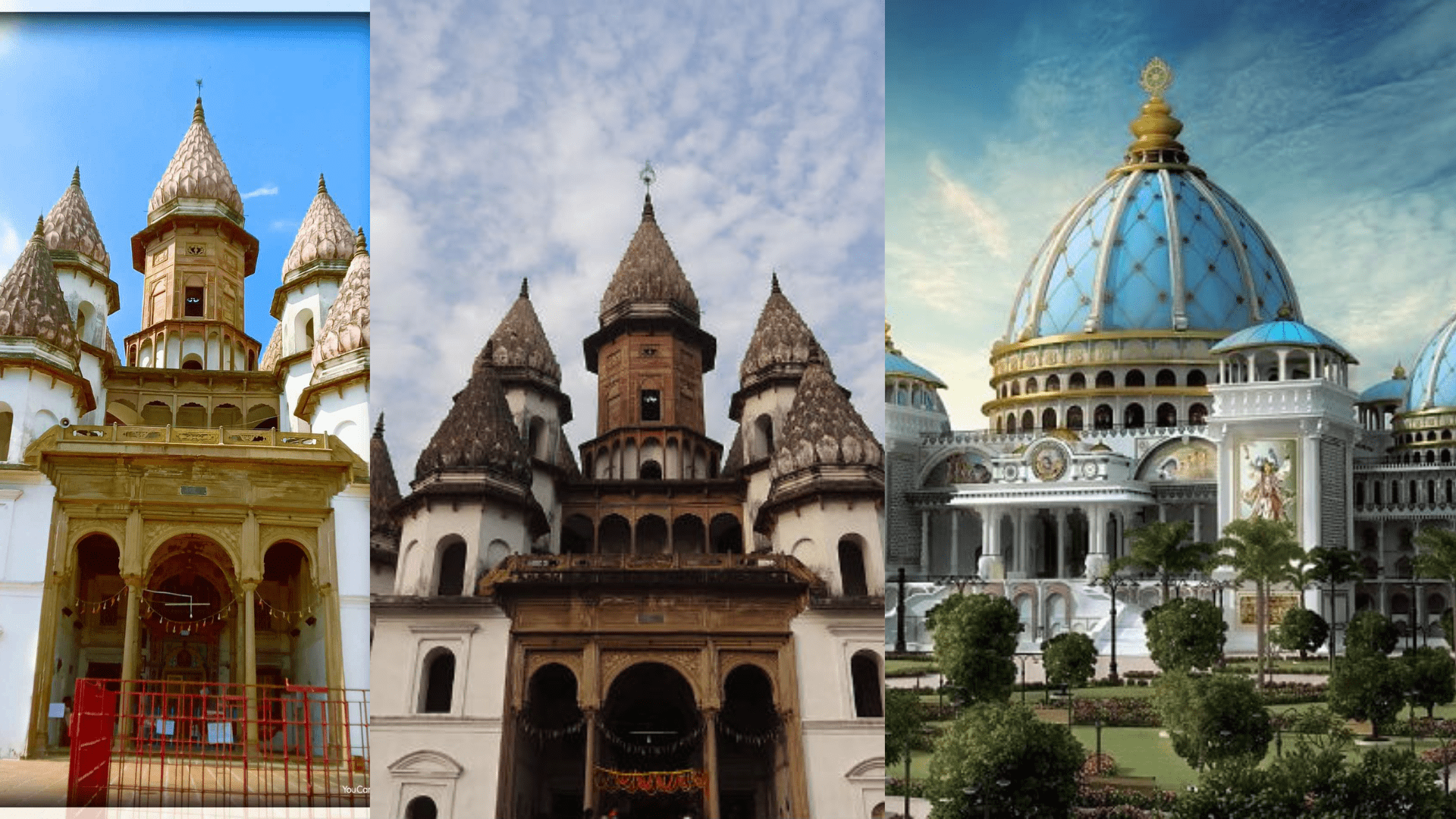Introduction
Bengal, a region steeped in history, holds a treasure trove of ancient temples. Delving into the roots of these architectural marvels provides insights into the cultural, religious, and historical aspects that shaped the landscape. This article aims to unravel the mysteries surrounding the question: Why were temples built in Bengal?
Why Were Temples Built in Bengal?
Unraveling the Spiritual Tapestry of Bengal’s Architectural Marvels
Historical Context
Bengal’s Temple Renaissance
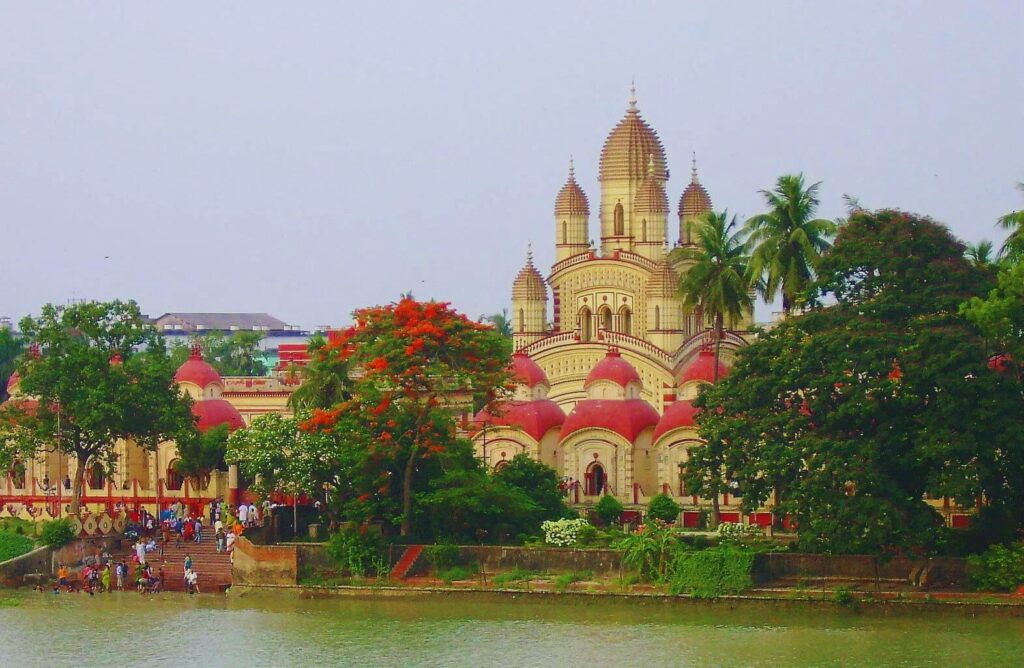
Bengal’s history is a tapestry woven with threads of cultural richness, political transformations, and religious renaissances. The construction of temples in Bengal can be traced back to distinct historical epochs marked by fervent spiritual rejuvenation.
Ancient Foundations
In the annals of antiquity, Bengal bore witness to the establishment of early temples that laid the foundation for a spiritual legacy. The Gupta period, spanning the 4th to 6th centuries, witnessed the emergence of temple architecture in Bengal, reflecting a synthesis of indigenous styles and influences from the north.
Medieval Splendor
The medieval period saw an efflorescence of temple construction, fueled by the Bhakti movement. Saints like Chaitanya Mahaprabhu played a pivotal role in rekindling devotion, inspiring the construction of temples dedicated to Lord Krishna and Radha. This period saw the infusion of devotional fervor into Bengal’s cultural ethos.
Sultanate and Mughal Influences
The arrival of the Delhi Sultanate and later the Mughals introduced a new chapter in Bengal’s history. While some temples faced challenges during periods of political upheaval, others flourished under the patronage of enlightened rulers who appreciated the cultural diversity within their realms.
The Bengal Renaissance
The 19th-century Bengal Renaissance, marked by intellectual and cultural awakening, witnessed a resurgence of interest in temple construction. Visionaries like Raja Ram Mohan Roy aimed at harmonizing traditional values with modernity, contributing to the preservation and restoration of temples.
Modern Revival
In contemporary times, efforts by archaeologists, historians, and local communities have led to the restoration and preservation of Bengal’s ancient temples. This modern revival reflects a collective commitment to safeguarding the cultural and historical heritage embedded in these sacred structures.
Understanding the historical context provides a nuanced perspective on why temples were built in Bengal. The interplay of religious fervor, cultural evolution, and political dynamics has shaped Bengal’s temple landscape into a living testament to its rich heritage.
Cultural Significance
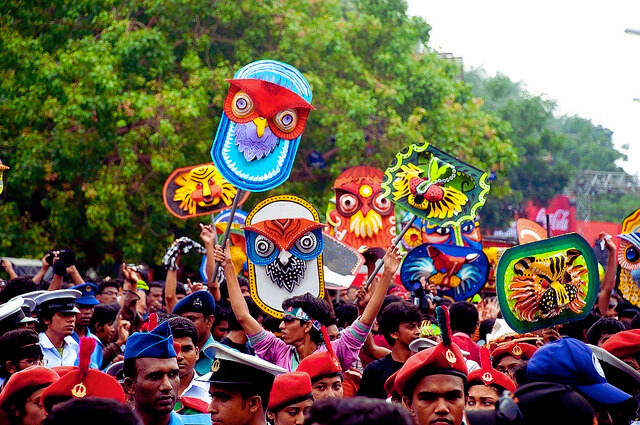
Temples as Cultural Epitomes
Bengal’s temples transcend their religious functions, assuming a role as cultural epitomes that echo the sentiments and artistic brilliance of the region. The cultural significance of these temples lies in their ability to encapsulate the essence of Bengal’s identity and provide a canvas for artistic expression.
Cultural Integration
Temples in Bengal serve as melting pots where religious beliefs intertwine seamlessly with cultural practices. The syncretic nature of Bengal’s culture is mirrored in the architecture, rituals, and festivities associated with these temples. They stand not merely as places of worship but as symbols of cultural integration.
Artistic Expression
Bengal’s temples boast an exquisite display of artistic prowess, notably seen in the intricate terracotta work adorning their facades. Each sculpture tells a story, capturing the ethos of Bengal’s folklore, mythology, and daily life. This artistic expression transcends religious boundaries, becoming a shared heritage for all.
Festivals and Celebrations
Temples play a central role in Bengal’s vibrant festival calendar. Durga Puja, celebrated with unparalleled grandeur, sees the transformation of temples into artistic marvels. The cultural significance lies in community participation, where people of diverse backgrounds come together to revel in the festivities.
Preservation of Traditions
The temples of Bengal act as custodians of age-old traditions. From classical music and dance performances to the observance of traditional rituals, these sacred spaces become living museums that preserve and propagate Bengal’s cultural tapestry.
Architectural Identity
Distinctive architectural styles, such as the ‘Navaratna’ or nine-spire style, contribute to the cultural identity of Bengal’s temples. The fusion of indigenous techniques with external influences creates a unique visual language that speaks to the historical and cultural evolution of the region.
Understanding the cultural significance of why temples were built in Bengal goes beyond religious considerations. It unravels a narrative of shared heritage, artistic brilliance, and a deep-rooted connection between spirituality and culture. The temples, standing as cultural epitomes, beckon visitors to explore the intricate layers of Bengal’s identity etched in stone and stories.
Architectural Marvels
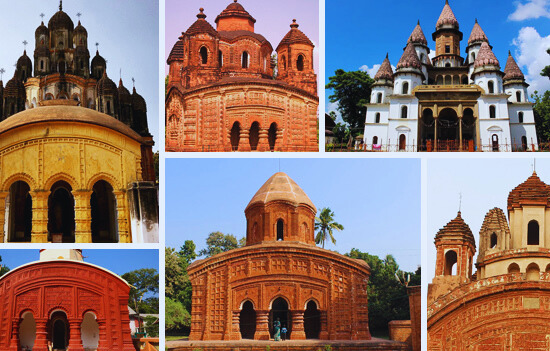
Sacred Structures
Bengal’s temples stand not only as places of worship but as architectural marvels that showcase a distinctive blend of creativity, craftsmanship, and spiritual symbolism. Unraveling the layers of their design reveals the unique features that set Bengal’s temples apart from others across India.
Terracotta Treasures
One of the defining features of Bengal’s temples is the intricate terracotta work that adorns their surfaces. These clay sculptures depict scenes from mythology, daily life, and spiritual allegories. The terracotta panels, with their detailed craftsmanship, add a unique texture to the exteriors, making each temple a gallery of stories etched in clay.
Navaratna Style
Bengal’s temples often follow the ‘Navaratna’ or nine-spire style of architecture. Each spire represents a celestial body, creating a harmonious alignment that symbolizes cosmic order. This style not only imparts a visual grandeur to the temples but also reflects the profound connection between the earthly and divine realms.
Rasmancha – A Unique Structure
The Rasmancha in Bishnupur stands as a testament to Bengal’s architectural ingenuity. Built in the 17th century, this unique structure was designed specifically for the grand celebration of the Ras festival. Its pyramidal structure, adorned with terracotta ornamentation, is a prime example of how Bengal’s temples cater to both spiritual and cultural needs.
Open Courtyards and Natmandirs
Many of Bengal’s temples feature expansive courtyards and Natmandirs (dance halls), adding spatial dimensions that enhance the overall experience. These open areas not only serve functional purposes during festivals but also contribute to the aesthetic appeal of the temple complexes.
Fusion of Styles
Bengal’s temples showcase a fusion of architectural styles, blending indigenous techniques with influences from neighboring regions. The result is a unique amalgamation that reflects the diverse cultural exchanges prevalent in Bengal throughout its history.
Exploring the architectural marvels of Bengal’s temples goes beyond admiring their structural beauty. It unveils a narrative of cultural syncretism, where artistic expression and spiritual devotion converge in a symphony of stone, terracotta, and celestial symbolism. Each temple tells a story not just of religious practices but of a civilization that found divine inspiration in the very act of creation.
Exploring the Mysteries: Why Were Temples Built in Bengal?
A deep dive into the spiritual, cultural, and historical facets that led to the construction of temples in this enchanting region.
Socio-Religious Factors
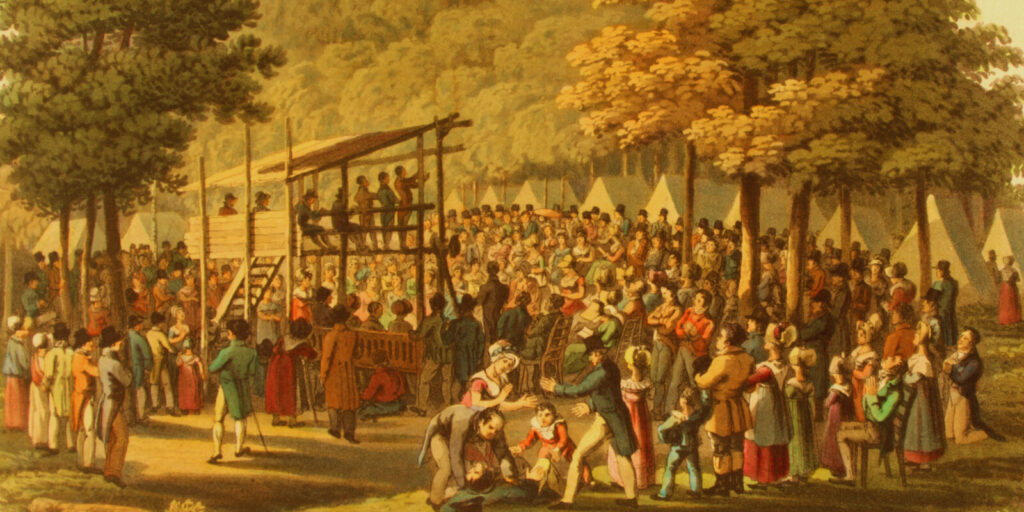
Religious Resurgence in Bengal
The construction of temples in Bengal finds its roots in a rich tapestry of socio-religious factors, where spiritual resurgence and societal transformations interweave to shape the landscape of devotion. Understanding these intricate threads provides insights into the why behind the temples that dot the Bengal horizon.
Bhakti Movement and Devotional Fervor
Historically, Bengal witnessed the rise of the Bhakti movement, a wave of devotional fervor that swept through the region. Visionaries like Chaitanya Mahaprabhu propagated the path of devotion, inspiring a surge in religious enthusiasm. Temples became not just places of worship but hubs of communal devotion, fostering a sense of spiritual kinship among the populace.
Influence of Saints and Religious Leaders
The presence and teachings of revered saints played a pivotal role in the temple construction movement. Saints like Ramakrishna Paramahamsa and Swami Vivekananda contributed to the spiritual awakening, encouraging the establishment of temples as centers for religious discourse and introspection.
Cultural Renaissance and Temple Revival
The Bengal Renaissance, marked by intellectual and cultural awakening in the 19th century, had a profound impact on the socio-religious landscape. It fueled a renewed interest in traditional values, leading to the restoration and construction of temples as symbols of cultural and spiritual pride.
Expression of Social Solidarity
The construction of temples often served as a collective endeavor, reflecting social solidarity and shared religious values. Communities came together to fund, build, and maintain these sacred structures, fostering a sense of unity and purpose.
Response to Political Changes
Periods of political upheaval and change often triggered a surge in temple construction. In response to shifts in power dynamics, rulers and communities sought to reinforce cultural and religious identities by investing in the establishment of temples.
Understanding the socio-religious factors behind temple construction in Bengal unravels a narrative of collective devotion, cultural renaissance, and a dynamic interplay between spirituality and societal dynamics. The temples, born from this intricate dance, stand not just as architectural marvels but as living testimony to the ebb and flow of religious fervor in the heart of Bengal.
Patronage and Support
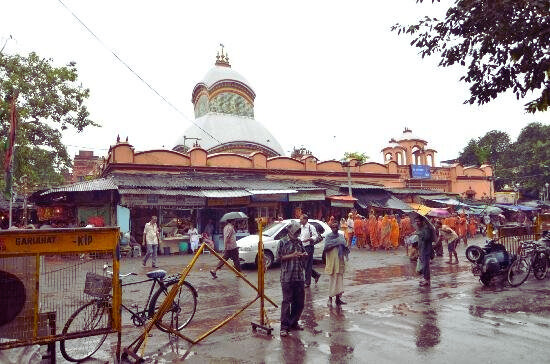
The construction of temples in Bengal, beyond being a spiritual endeavor, found substantial support through noble patronage. Kings, nobles, and affluent individuals played a pivotal role in fostering the growth of these sacred structures, turning them into bastions of cultural and religious significance.
Royal Endorsement
Kings and rulers in Bengal, recognizing the cultural and social importance of temples, often provided explicit endorsement and financial backing for their construction. Temples, in turn, became not only places of worship but symbols of royal authority and benevolence.
Noble Philanthropy
Nobles and affluent individuals in Bengal played a crucial role as patrons of temples. Their philanthropic endeavors went beyond financial contributions; they actively participated in the planning, construction, and maintenance of these religious edifices. Temples thus became communal projects, reflecting the collective aspirations of both the elite and the commoners.
Economic Support for Artisans and Craftsmen
The construction of temples catalyzed economic development, providing employment opportunities for skilled artisans and craftsmen. The nobility’s support extended beyond the religious domain to the promotion of art and craftsmanship, contributing to the flourishing cultural milieu of Bengal.
Community Endowments
Communities at large, inspired by the vision of a shared spiritual and cultural heritage, contributed through endowments for temple construction. These collective efforts reinforced a sense of community identity and shared responsibility for the upkeep of the temples.
Legacy of Patronage
The legacy of noble patronage is evident in the grandeur and architectural finesse of Bengal’s temples. The enduring structures stand as a testament to the vision and generosity of those who recognized the importance of these edifices in preserving Bengal’s cultural and religious legacy.
Exploring the role of patronage in temple construction reveals a dynamic interplay between the elite, the community, and the artisans. The temples of Bengal, nurtured by this collective support, continue to stand as not only religious sanctuaries but as monuments to the harmonious collaboration between nobility and community in the pursuit of cultural and spiritual flourishing.
Rituals and Worship
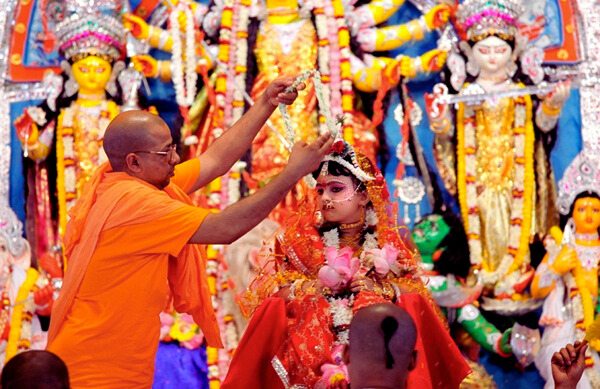
The construction of temples in Bengal is not merely a manifestation of architectural brilliance; it is deeply rooted in intricate religious practices that breathe life into these sacred spaces. Exploring the rituals and worship associated with Bengal’s temples provides a profound understanding of the spiritual heartbeat that animates these architectural wonders.
Daily Pujas and Offerings
At the core of temple life in Bengal are the daily pujas and offerings to the deities enshrined within. Devotees participate in elaborate rituals, offering flowers, incense, and various symbolic items as expressions of devotion. These rituals create a rhythm that infuses the temple with sacred energy, fostering a connection between the divine and the worshipper.
Festivals as Grand Celebrations
Temples in Bengal transform into vibrant centers of celebration during festivals. Durga Puja, Kali Puja, and other festivities witness a surge of devotees who come together to partake in rituals, cultural events, and processions. The temples become stages for the grand theatre of religious fervor and cultural expression.
Kirtans and Bhajans
Musical rituals, such as kirtans and bhajans, form an integral part of temple worship in Bengal. Devotees engage in soulful singing and chanting, creating an atmosphere of spiritual resonance. These musical expressions not only deepen the devotional experience but also contribute to the cultural richness of temple life.
Ceremonial Observances
Temples in Bengal often host specific ceremonies to mark significant life events, such as weddings, namkaran (naming ceremonies), and annaprasan (first rice-eating ceremony). These ceremonies, conducted with religious solemnity, highlight the multifaceted role of temples in the lives of the community.
Pilgrimages and Sacred Journeys
Many temples in Bengal are part of larger pilgrimage circuits, drawing devotees from far and wide. The act of embarking on a pilgrimage to these sacred sites is considered a transformative journey, reinforcing the spiritual connection between the devotee and the divine.
Understanding the religious practices associated with Bengal’s temples unveils a world where the architectural grandeur is inseparable from the rhythmic cadence of daily rituals and celebratory fervor. Temples cease to be static structures; they become dynamic spaces where the spiritual essence of Bengal finds expression through the devotion of its people.
Artistic Flourish
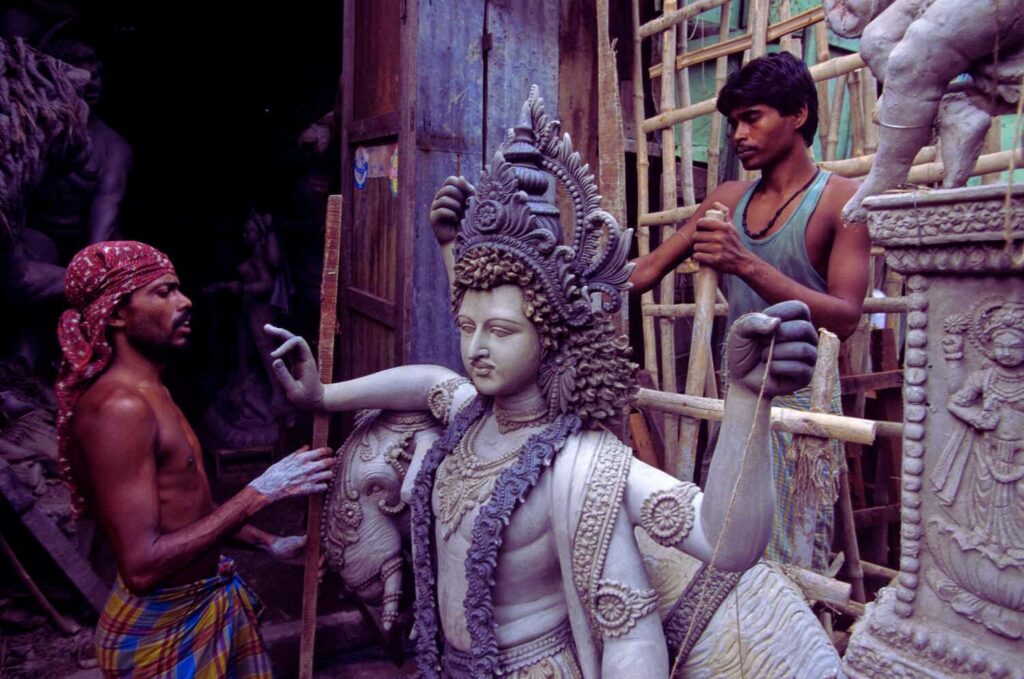
The construction of temples in Bengal is not only an architectural feat but a canvas where the strokes of art and literature have left an indelible mark. Exploring the symbiotic relationship between temples and the rich artistic and literary heritage of Bengal unveils a narrative of creative expression and spiritual transcendence.
Terracotta Tales and Sculptural Narratives
Bengal’s temples are adorned with intricate terracotta panels, each telling a unique story. These sculptural narratives depict scenes from mythology, folklore, and everyday life, providing a visual feast for the devotees and visitors. The terracotta embellishments serve as a bridge between the divine and the earthly, making the temples not just places of worship but galleries of artistic storytelling.
Inspirations from Literature
Bengal’s literary legacy, encompassing works by luminaries like Rabindranath Tagore and Bankim Chandra Chattopadhyay, has deeply influenced temple construction. Themes from literature find expression in the iconography and symbolism of the temples, creating a layered narrative that resonates with devotees familiar with the literary canon.
Dance and Music as Devotional Expression
Temples in Bengal are not silent structures; they resonate with the sounds of devotional music and dance. Classical dance forms like Odissi and Bharatanatyam find a space in temple precincts, offering a visual and auditory treat that transcends the mundane. This infusion of artistic expressions enhances the spiritual ambiance, creating a holistic experience for worshippers.
The blend of Indigenous Styles and External Influences
Bengal’s temples showcase a fusion of indigenous architectural styles with external influences. The assimilation of artistic elements from neighboring regions and cultures has resulted in a unique visual language. This amalgamation reflects the cosmopolitan nature of Bengal’s artistic traditions, where diversity becomes a source of inspiration.
Celebration of Artisanal Craftsmanship
The construction of temples in Bengal is a celebration of artisanal craftsmanship. Skilled artisans, guided by artistic vision and spiritual devotion, contribute to the creation of intricate sculptures, carvings, and paintings. The temples thus become living museums of artistic excellence, fostering an environment where craftsmanship is revered as a form of divine expression.
Exploring the influence of art and literature on Bengal’s temples is akin to unraveling a tapestry where each thread represents a stroke of creativity and cultural resonance. The temples, standing at the intersection of the artistic and the divine, invite worshippers and admirers alike to experience the profound beauty of spiritual expression through the language of art.
Conclusion
In conclusion, the temples of Bengal stand as a testament to a rich tapestry of history, culture, and spirituality. Exploring the reasons behind their construction unveils a captivating journey that continues to resonate in the hearts of those who seek to understand the essence of Bengal’s heritage.
Read also: Why Were People Dissatisfied with British Rule in the 1870s and 1880s?
FAQs about Why Temples Were Built in Bengal
Q: Were temples in Bengal primarily religious institutions?
While temples in Bengal served as religious centers, they also played a crucial role in preserving cultural and artistic heritage.
Q: How did the architectural style of Bengal’s temples differ from other regions?
Bengal’s temples boast unique features like intricate terracotta work and distinct terracotta panels, setting them apart in terms of architectural aesthetics.
Q: Were temples constructed only by royalty, or did commoners contribute?
Temple construction received contributions from various segments of society, including commoners, showcasing a collective effort to uphold religious and cultural values.
Q: Did Bengal’s temple construction have any impact on neighboring regions?
Yes, Bengal’s temple construction influenced neighboring regions, fostering an exchange of artistic and cultural ideas.
Q: How have temples in Bengal stood the test of time?
The enduring legacy of Bengal’s temples lies in ongoing restoration efforts and their integral role in community life.
Q: What role did mythology play in the construction of temples in Bengal?
Mythology served as a profound source of inspiration, with many temples dedicated to deities and stories from Hindu epics.
